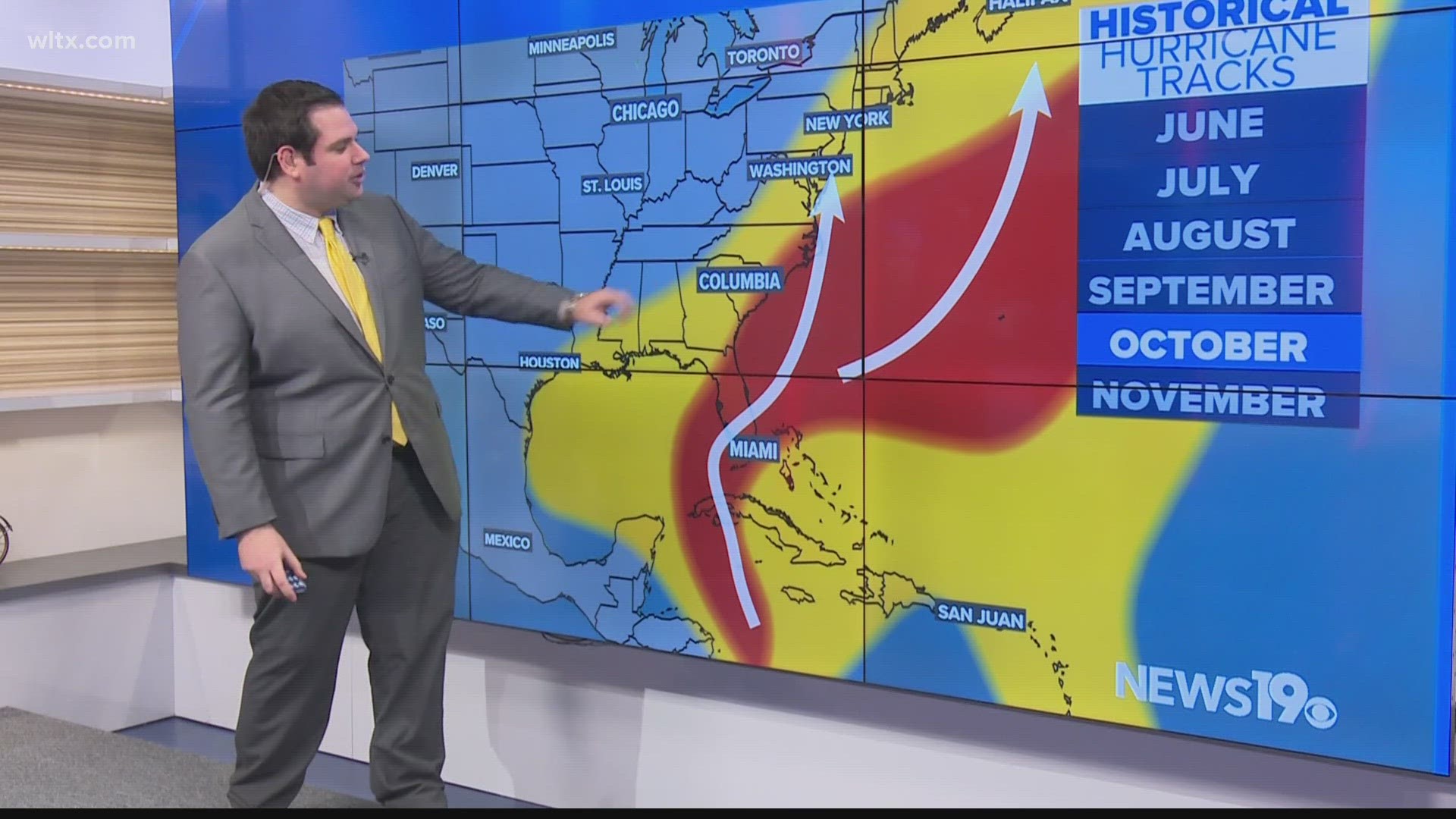COLUMBIA, S.C. — While the summer heat may be gone, hurricane season still has 2 months to go. As we get further into the season, the types of tropical systems and where they go changes.
2023’s hurricane season isn’t over but is already classified as an above-average season. The good news is that we are starting to enter a much less active portion of the year. After the peak of hurricane season in September, the frequency of storms begins to drop off very quickly.
Since 1950, 23 hurricanes have made landfall in the US in the months of October and November. Here in South Carolina, we had two storms while Florida clearly leads with 12 landfalling systems.

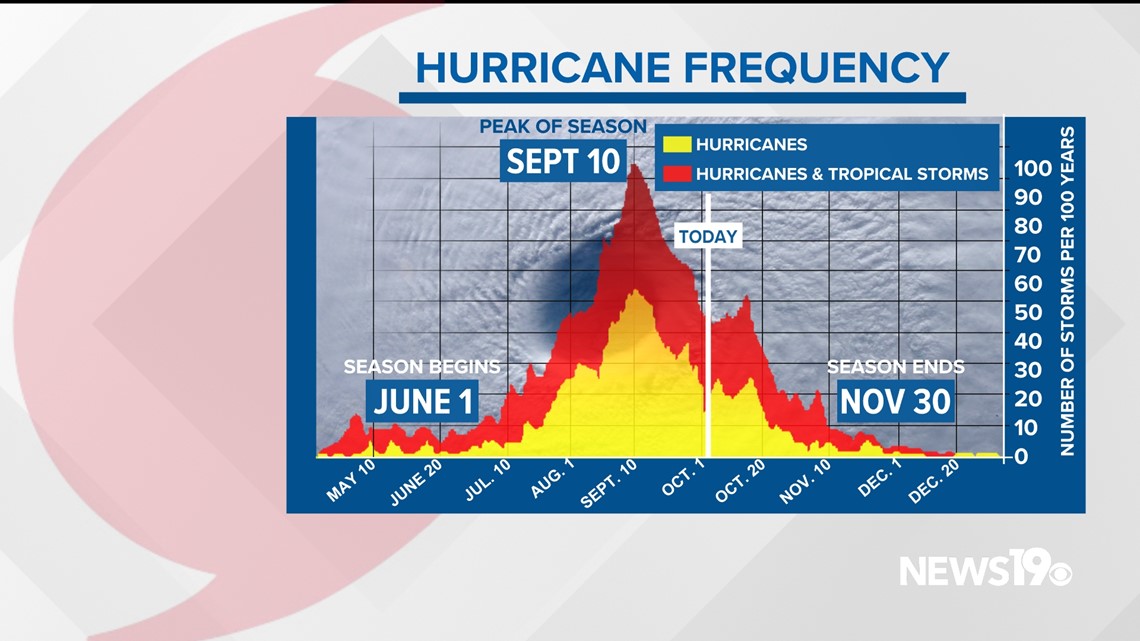

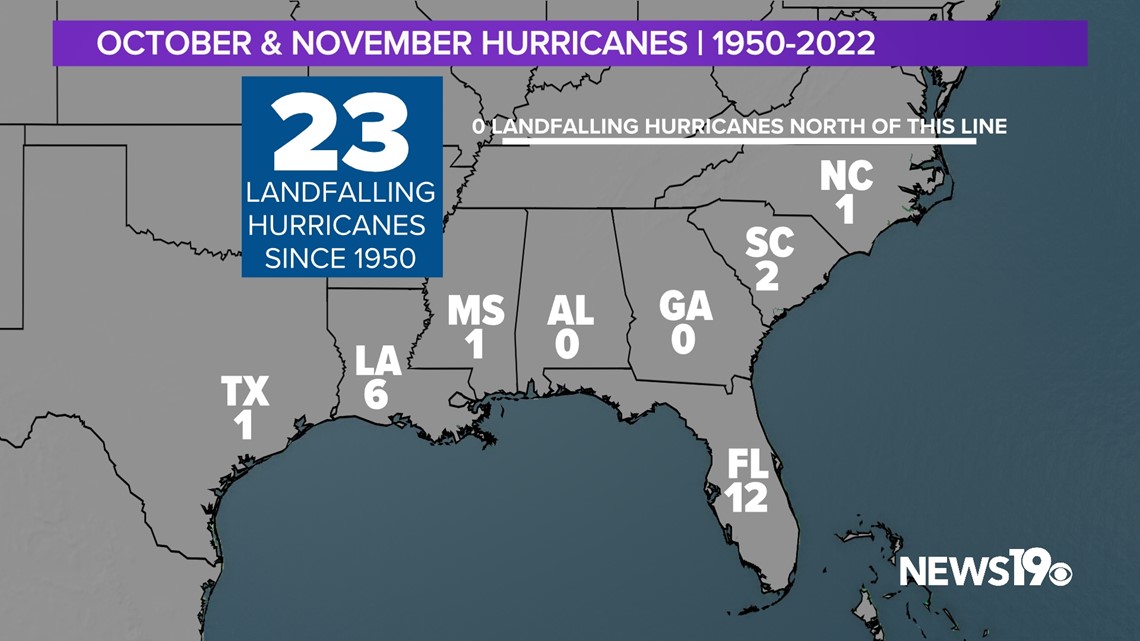
The reason for this becomes clearer when looking at the climatology for storms this time of the year. Hurricanes typically form in the Western Caribbean or off the East Coast. They often get picked up by cold fronts like the one we are expecting late this week. November activity drops off quite a bit with most storms staying away from the US.

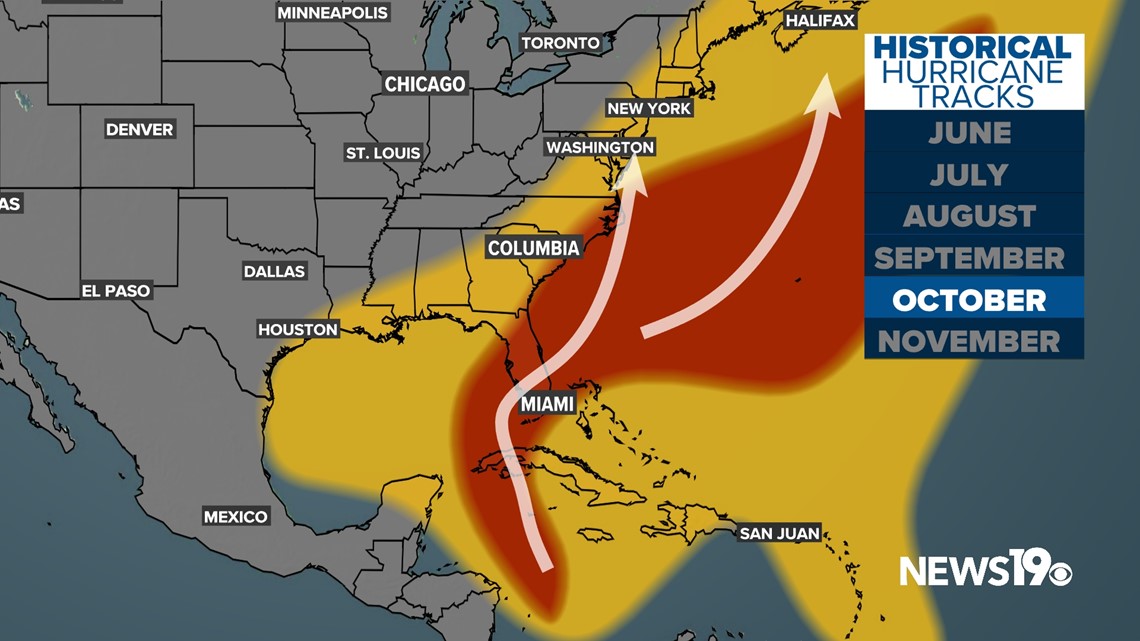

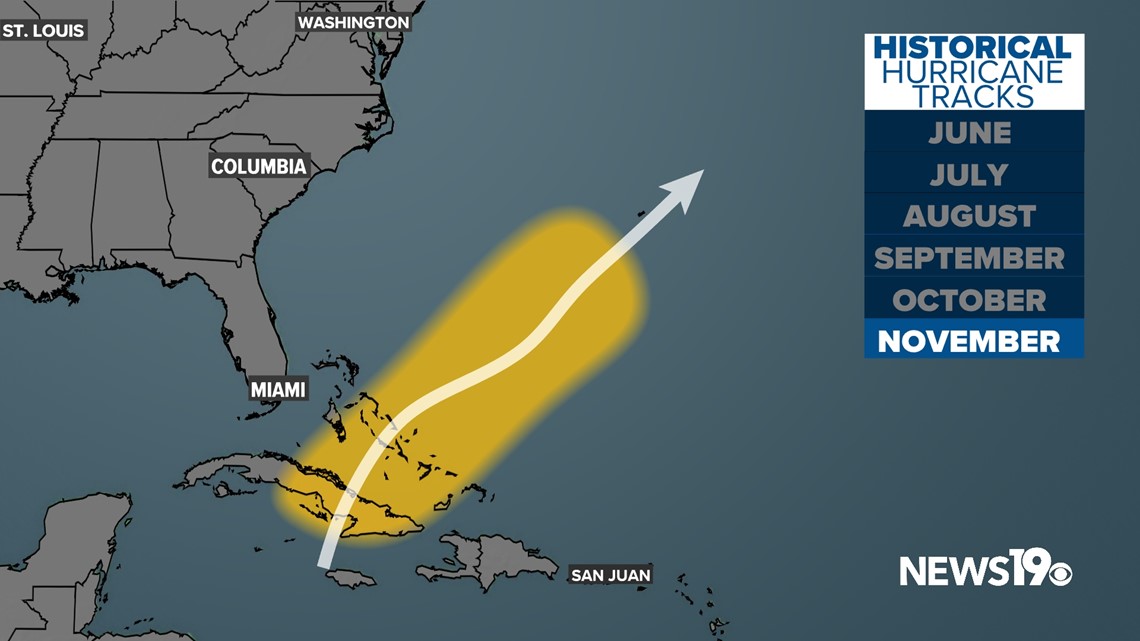
This week shows a great example of why storms struggle to form in these months. The subtropical jet stream looks to be very active as a large dip in the polar jet moves over the East Coast. This creates hostile winds that keep storms from organizing.


While we can’t rule out any more storms this year, thankfully, it looks like we are entering a much quieter stretch in the 2023 hurricane season going into the next month.

